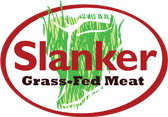Hormones and Antibiotics

Food Safety
 This is a good read for an in-depth review about Food Safety: The Agricultural Use of Antibiotics and its Implications for Human Health, check out this report from the US General Accounting Office.
This is a good read for an in-depth review about Food Safety: The Agricultural Use of Antibiotics and its Implications for Human Health, check out this report from the US General Accounting Office.
Use of Antimicrobial Growth Promoters in Food Animals
 Supplementing animal feed with antimicrobial agents to enhance growth has been common practice for more than 30 years and is estimated to constitute more than half the total antimicrobial use worldwide. The potential public health consequences of this use have been debated; however, until recently, clear evidence of a health risk was not available. Accumulating evidence now indicates that the use of the glycopeptide avoparcin as a growth promoter has created in food animals a major reservoir of Enterococcus faecium, which contains the high level glycopeptide resistance determinant anA, located on the Tn1546 transposon.
Supplementing animal feed with antimicrobial agents to enhance growth has been common practice for more than 30 years and is estimated to constitute more than half the total antimicrobial use worldwide. The potential public health consequences of this use have been debated; however, until recently, clear evidence of a health risk was not available. Accumulating evidence now indicates that the use of the glycopeptide avoparcin as a growth promoter has created in food animals a major reservoir of Enterococcus faecium, which contains the high level glycopeptide resistance determinant anA, located on the Tn1546 transposon. Antibiotic Resistance: An Ecological Perspective on an Old Problem
 Antibiotic resistance, the acquired ability of a pathogen to withstand an antibiotic that kills off its sensitive counterparts, originally arises from random mutations in existing genes or from intact genes that already serve a similar purpose. Exposure to antibiotics and other antimicrobial products, whether in the human body, in animals, or the environment, applies selective pressure that encourages resistance to emerge favoring both “naturally resistant” strains and strains which have “acquired resistance.” Horizontal gene transfer, in which genetic information is passedbetween microbes, allows resistance determinants to spread within harmless environmental or commensal microorganisms and pathogens, thus creating a reservoir of resistance.
Antibiotic resistance, the acquired ability of a pathogen to withstand an antibiotic that kills off its sensitive counterparts, originally arises from random mutations in existing genes or from intact genes that already serve a similar purpose. Exposure to antibiotics and other antimicrobial products, whether in the human body, in animals, or the environment, applies selective pressure that encourages resistance to emerge favoring both “naturally resistant” strains and strains which have “acquired resistance.” Horizontal gene transfer, in which genetic information is passedbetween microbes, allows resistance determinants to spread within harmless environmental or commensal microorganisms and pathogens, thus creating a reservoir of resistance. 



